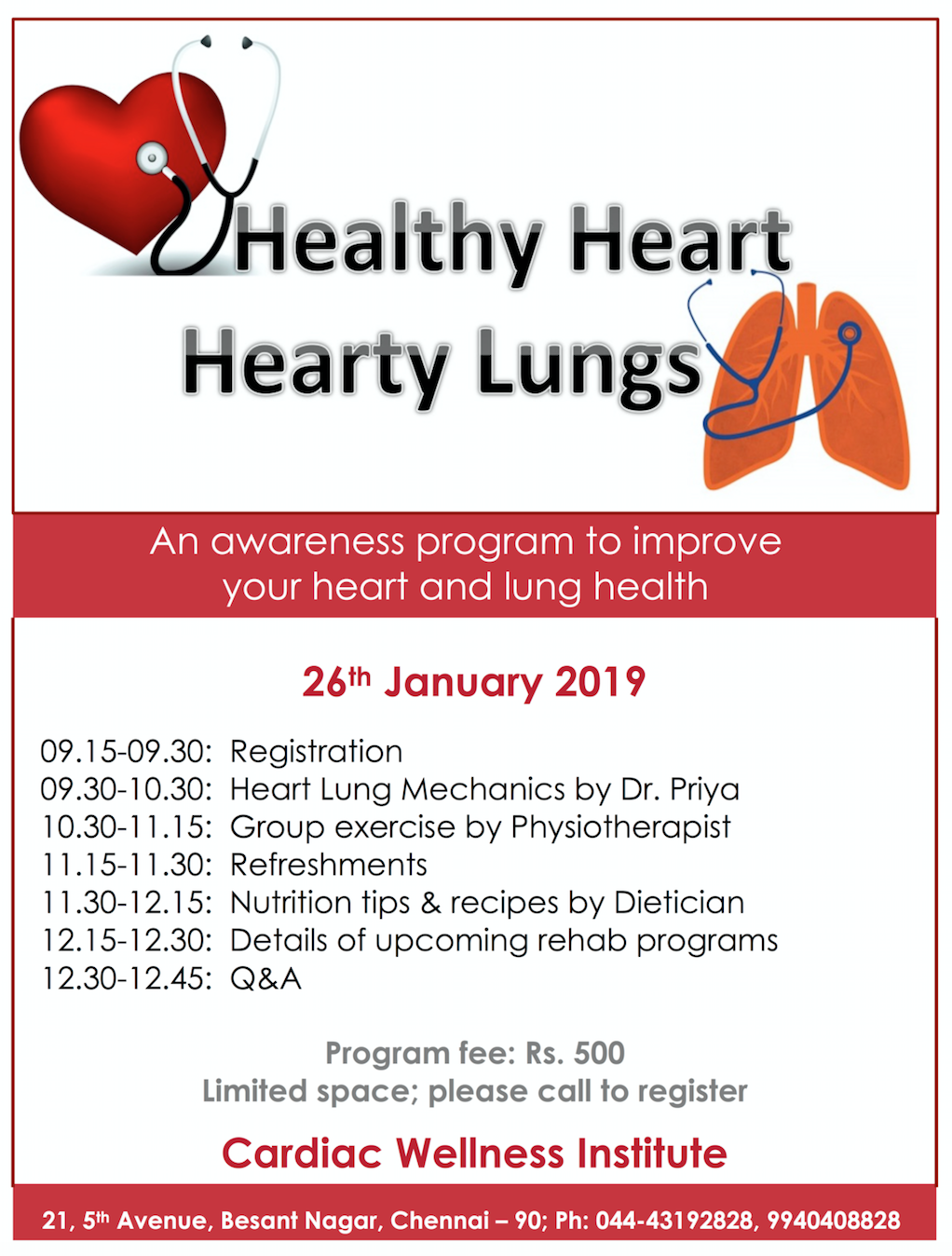I am glad that pulmonary rehabilitation is starting to get it’s much deserved attention. We had elaborated on the basics of pulmonary rehab in an earlier post…
Let me explain why pulmonary rehab is the need of the hour. More and more people today are suffering from chronic diseases of the airways and the lungs like chronic bronchitis, emphysema and asthma. While breathlessness, airway tightness, cough, wheeze, expectoration, tiredness and fatigue are noted early in the disease phase, many of them go on to become oxygen dependent in due course of time as they are unable to meet their own body’s oxygen requirements. In other words, their breathing efficiency drops so much that the oxygen content in room air is no longer enough for them; supplemental oxygen in a concentrated gas form is prescribed to these individuals and they breathe in this extra oxygen either intermittently or throughout the day. While it is not a taboo or a stigma to be on ambulatory oxygen (i.e. extra oxygen supply that you carry with you while you continue to do your routine activities like going to work, exercising, socialising etc.), it is a clear indication that the respiratory system is choking under threats like smoking, air pollution, lack of exercise and unhealthy diet.
Medical management of chronic lung problems includes medications, lifestyle changes, pulmonary rehab and oxygen supplementation. Surgical management is limited to lung transplantation.
Can pulmonary rehab help prevent this stage of supplemental oxygen requirement? Yes, pulmonary rehab is proven to improve the breathing efficiency of the diseased airways and lungs and prevent the stage of oxygen dependency. However, it should be initiated early for maximum benefits. As soon as you or your loved one is diagnosed with a chronic lung disease, it is imperative to seek out the nearest pulmonary rehab service and enrol in a rehab program.
Will pulmonary rehab help improve my breathlessness and other symptoms? The components of pulmonary rehab, namely health education, breathing exercise, aerobic exercise, strength training, dietary modification and group counselling, together help to reduce your symptoms and increase your ability to do daily activities. At least 4 weeks of pulmonary rehab with 2-3 sessions per week are warranted in all chronic lung patients.
How should one go about finding out if pulmonary rehab is likely to benefit him/her? Talk to your pulmonologist. An increasing medication dose and number of drugs, an inability to do things that you could do with ease earlier, a falling body weight and muscle weakness are some indicators of resistance to medical management. Pulmonary rehab, if it was not started at the time of diagnosis, should at least be initiated when drugs are not helping anymore. Pulmonologists and general physicians managing such patients should stress the importance of a comprehensive pulmonary rehab program and refer their patients to avail such services.
A recent publication in the journal Lung India addresses some pertinent issues of chronic lung patients and stresses the need for comprehensive pulmonary rehab services across the country (doi: 10.4103/0970-2113.116248).
Spreading awareness about chronic lung disorders is our prime concern.
Cardiac Wellness Institute is conducting a health awareness program that aims to help people with cardiac and pulmonary ailments manage their health better and also to enable disease prevention in high-risk individuals.
The program is scheduled for 9.15 am – 12.45 pm on Saturday, 26th January 2019. Registration fee is Rs. 500 per person. Please call 044-43192828 or 9940408828, or email cardiacwellnessinstitute@gmail.com to register for the program.
Agenda:
09.15-09.30: Registration
09.30-10.30: Heart Lung Mechanics by Dr. Priya
10.30-11.15: Group exercise by Physiotherapist
11.15-11.30: Refreshments
11.30-12.15: Nutrition tips & recipes by Dietician
12.15-12.30: Details of upcoming rehab programs
12.30-12.45: Q&A
